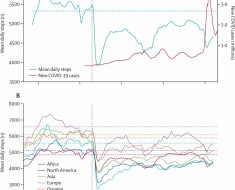When a new invasive tick species recently appeared in the U.S., government health officials said it was critical to learn more about the parasite, which could be a threat to humans, pets and livestock.
But the ongoing government shutdown has halted at least some of this research.
That's the case for Dr. Kevin Lahmers, a veterinary pathologist at Virginia Tech's College of Veterinary Medicine, who's been collaborating with the U.S. Department of Agriculture to determine whether the tick, known as the Asian longhorned tick, can transmit a cattle parasite called Theileria orientalis. But now, he says the project has been delayed.
Because of the shutdown, Lahmers and his team can't start the process to "determine the risk [the tick] poses to cattle and how we might manage this risk," he said in a statement.
The Asian longhorned tick (Haemaphysalis longicornis) is native to Asia and was first identified in the U.S. in 2017, when one was found on a sheep in New Jersey. Since then, the tick has been detected in eight other states: New York, Virginia, West Virginia, Arkansas, North Carolina, Pennsylvania, Connecticut and Maryland, according to the Centers for Disease Control and Prevention (CDC).
Unlike most tick species, longhorned ticks can reproduce asexually and lay massive numbers of eggs. A single female longhorn tick can lay up to 2,000 eggs at a time, the CDC says. Due to these large numbers, longhorned ticks can cause severe infestations in livestock, leading to weakness, anemia or even death in the animals.
There is also concern that the tick could spread diseases in the U.S., just as it does in other parts of the world. But so far, its ability to spread diseases in the U.S. is unknown.
Delays in research "will handicap our understanding of the disease dynamic and control strategies [involving the longhorned tick] for the coming year," Lahmers said.
- 5 Things to Know About the New Tick Species in the US
- Microscopic Monsters: Gallery of Ugly Bugs
- Tiny & Nasty: Images of Things That Make Us Sick
Originally published on Live Science.
Source: Read Full Article





